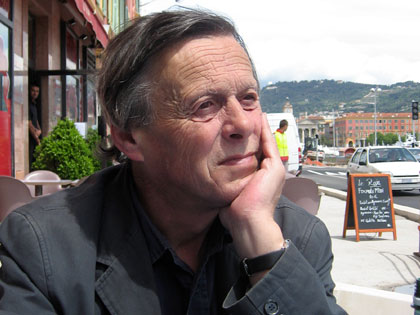Irish Independent, 2012
When President de Valera addressed the nation through the new medium of Irish television on New Year’s Eve, 1961, he compared broadcasting to atomic energy, both of which “can be used for incalculable good but can also do irreparable harm.” Indeed, he confessed that when he thought of the “immense power” of television and radio he felt “somewhat afraid.”
He had good reason to be fearful, and thoughout the 1960s nothing would cause such unease to the church-state alliance that had ruled Ireland for decades than The Late Late Show, which began six months after the new television station opened and would become a major force in changing Irish attitudes forever.
The show had been conceived by its first producer, Tom McGrath, as an Irish version of Johnny Carson’s The Tonight Show, which had just begun on NBC. However, Carson’s California-based programme was determinedly showbiz in content and style, whereas the Late Late opted from the start for a more eclectic blend of celebrities and hitherto unknown locals offering their anecdotes and opinions.
Gay Byrne, until then a broadcaster with Granada television in England (and thus only known to those Irish viewers who could receive British stations), was the brave choice to front this ill-defined new venture, which was originally intended merely as a summer “filler” show. But such was the immediate impact of this young turk – still only 27 when the first Late Late aired on July 6, 1962 – that both he and his new venture immediately secured a permanent place in the Telefis Eireann schedules.
(Indeed, Gaybo, as he soon became known, would go on to host the show for 37 years – a world record and seven longer than Johnny Carson, whose tenure acrimoniously ended in 1992).
The early seasons of the Late Late were uneventful enough, though viewers were quickly hooked by its quirky, unscripted format and by the brash confidence of its host, who seemed just as interested in stirring up debate on social and religious issues as in chatting to homegrown and foreign celebrities who had books to sell, plays to promote or films to flog.
And it was this sense that anything might happen on any given night that made the show unmissable to viewers (who anyway had few alternatives by way of home entertainment, radio having begun to seem very passe), though it wasn’t until the mid-1960s that the show became really controversial.
There’d been regular and sometimes quite unpleasant spats on social and political issues between Ulick O’Connor and Dennis Franks, the former a combative writer and journalist and the latter a posh-voiced earnest actor of Polish-Jewish decent, who died in 1967. But 1966 was the year in which the Late Late began to make headlines.
This began with a no-show that generated controversy. Victor Lownes, London representative of Hugh Hefner’s Playboy empire, had been invited to appear, but his participation was axed by the RTE authorities when it was learned that he aimed to use his Late Late interview to recruit young Irish women to work as Bunnies in Playboy clubs. Catholic Ireland couldn’t be having that.
Two months later, in March 1966, all officialdom’s hell broke loose when Trinity student Brian Trevaskis criticised the Bishop of Galway, Michael Browne, for spending money on a new cathedral rather than on helping the poor. In a country still in thrall to an autocratic clergy that didn’t brook dissent, or even questioning, these remarks were mutinous enough, but when Trevaskis went on to describe the cathedral as a “monstrosity” and the bishop as a “moron” there was uproar from Catholic Ireland – if not from many younger viewers, who applauded this young upstart’s radical cheek.
Invited back to explain himself – indeed, to apologise – on the following week’s show, Trevaskis instead argued that an Ireland which saw nothing wrong in the building of ornate churches but which regarded unmarried mothers as outcasts was not a Christian society. And so ended the television career of a Catholic, working-class student, who in later years joined the Anglican church before being fatally hit by a train in north Dublin in 1980.
But the year’s most famous controversy – and one that has gone into Late Late folklore as ‘The Bishop and the Nightie’ – came via a small item on the show in which Gay Byrne chatted to a number of couples about their relationships. Asked if she could remember the colour of her honeymoon nightdress, Mrs Fox from Terenure suggested that she mightn’t have been wearing any such garment.
This provoked laughter from the host and giggles from the studio audience. However, the Bishop of Galway didn’t see the funny side of it, denouncing the show as immoral and its presenter as a purveyor of “filth.” Nor was he the only unamused cleric – the Bishop of Clonfert sending a telegram to RTE declaring that he was “disgusted with disgraceful performance.” Meanwhile, Loughrea Town Council described the show as “a dirty programme that should be abolished altogether.” Cowed by all these moral worthies, RTE capitulated with an apology.
In subsequent decades there would be other Late Late controversies – involving contraceptive trains, lesbian nuns, drunken psychoanalysts, Gerry Adams, Annie Murphy, Padraig Flynn – but none that had the impact occasioned by Brian Trevaskis, the Bishop of Galway and what women wear or don’t wear in their marital bed.
Ireland was changing, its people were no longer content to pay blind obeisance to the old social, sexual or religious verities and in the Late late Show they had discovered an open forum, unmediated by anyone other than its host, for their sceptical questioning and their burgeoning dissent from received official diktats, whether clerical or political. No wonder De Valera had been so afraid.
